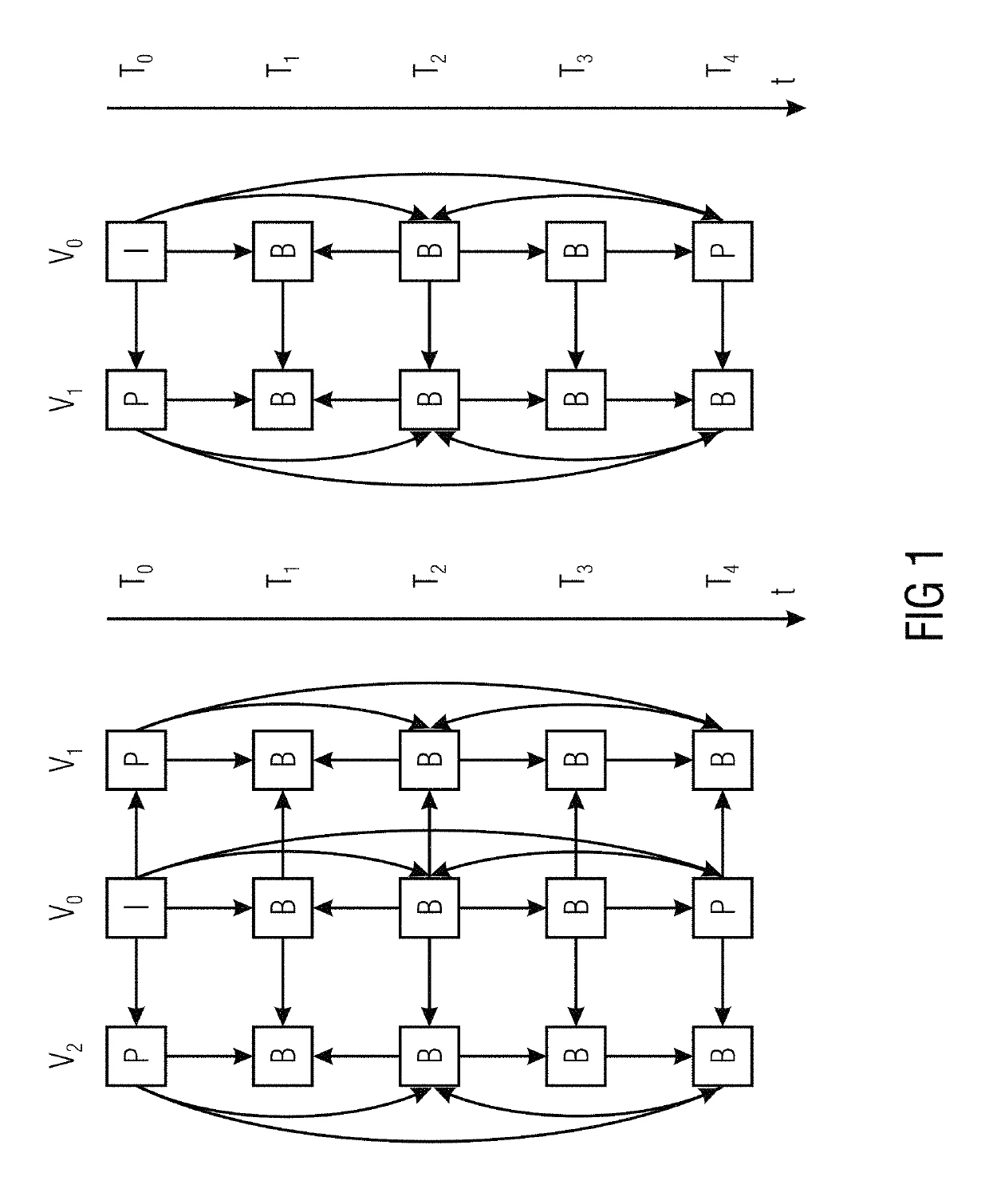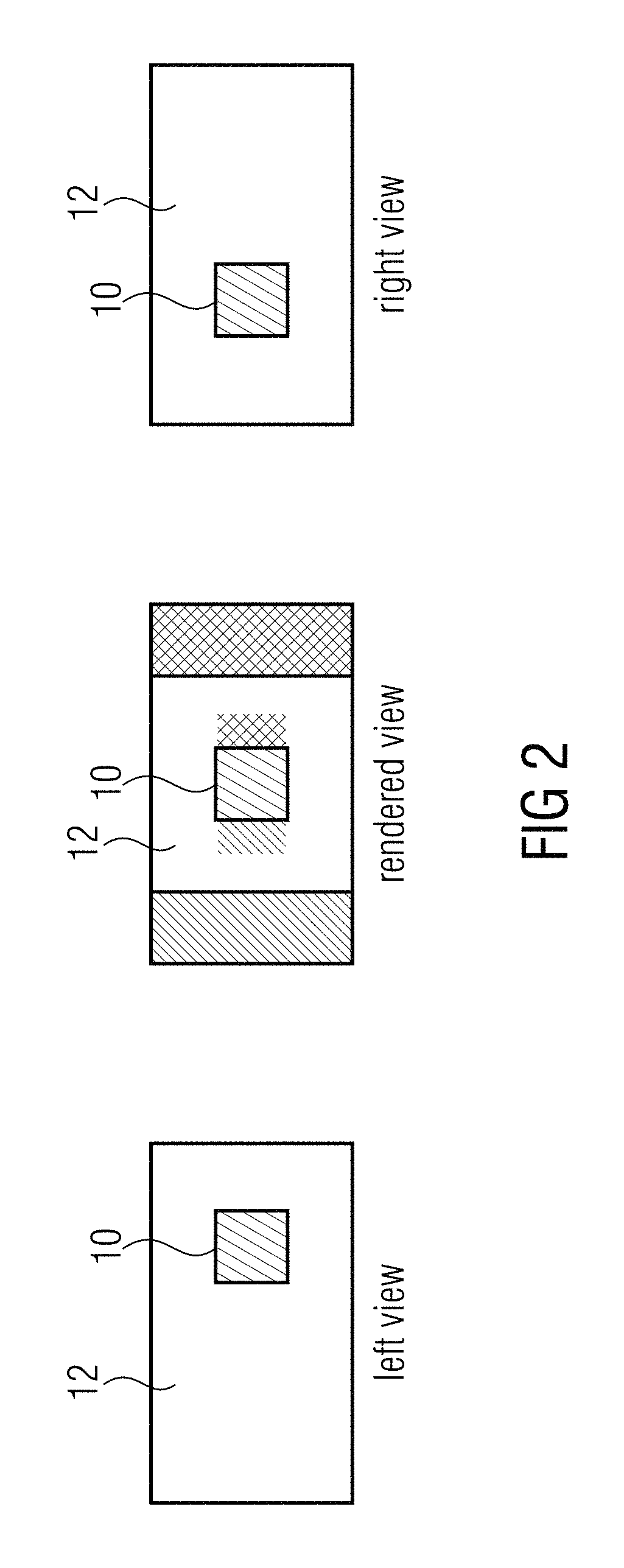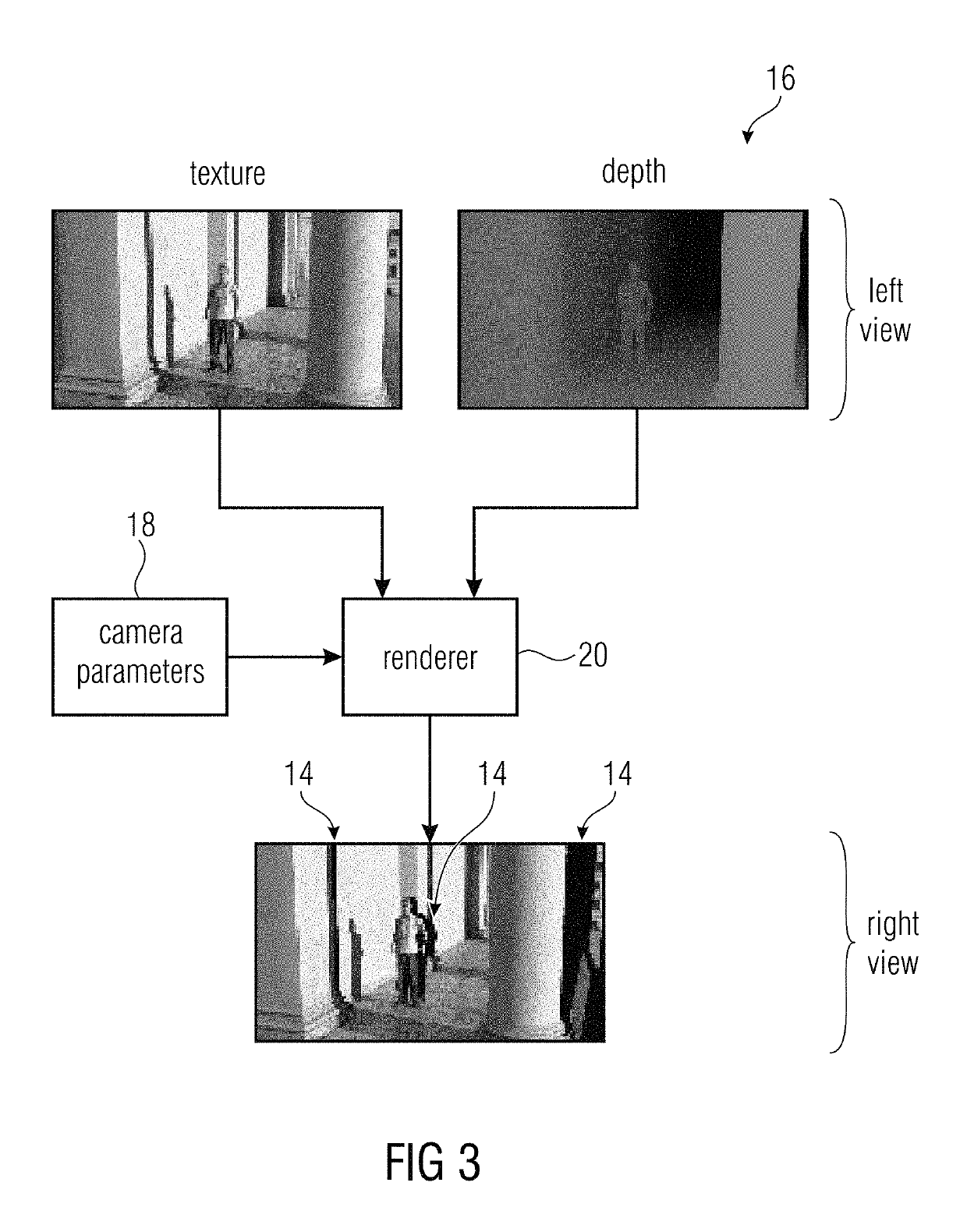Multi-view coding with exploitation of renderable portions
a multi-view video and coding technology, applied in the field of multi-view coding, can solve the problems of optimally efficient compression of multi-view data, high amount of inter-view redundancies in multi-view video sequences, and unsuitable mvc for applications, so as to improve prediction, increase coding efficiency, and save rate
- Summary
- Abstract
- Description
- Claims
- Application Information
AI Technical Summary
Benefits of technology
Problems solved by technology
Method used
Image
Examples
Embodiment Construction
[0027]Before describing several embodiments of the present invention with regard to the figures, it should be noted that the same reference signs have been used within these figures for equal elements or elements assuming the same functionality, and accordingly the description of such an element with regard to one figure shall equally apply to another figure.
[0028]FIG. 4 shows an encoder for encoding a multi-view signal 20 into a data stream 21. As will become clear from the following description, the multi-view signal 20 is exemplarily shown to comprise a first view 22 and a second view 24. However, the embodiments of the present invention are not restricted to such a two-view case and are equally applicable to a case where the number of views of the multi-view signal 20 is higher than two. In any case, the multi-view signal 20 comprises views 22 and 24 which belong to, or relate to, the same scene, but to different view points, and accordingly a high amount of redundancy exists be...
PUM
 Login to View More
Login to View More Abstract
Description
Claims
Application Information
 Login to View More
Login to View More - R&D
- Intellectual Property
- Life Sciences
- Materials
- Tech Scout
- Unparalleled Data Quality
- Higher Quality Content
- 60% Fewer Hallucinations
Browse by: Latest US Patents, China's latest patents, Technical Efficacy Thesaurus, Application Domain, Technology Topic, Popular Technical Reports.
© 2025 PatSnap. All rights reserved.Legal|Privacy policy|Modern Slavery Act Transparency Statement|Sitemap|About US| Contact US: help@patsnap.com



